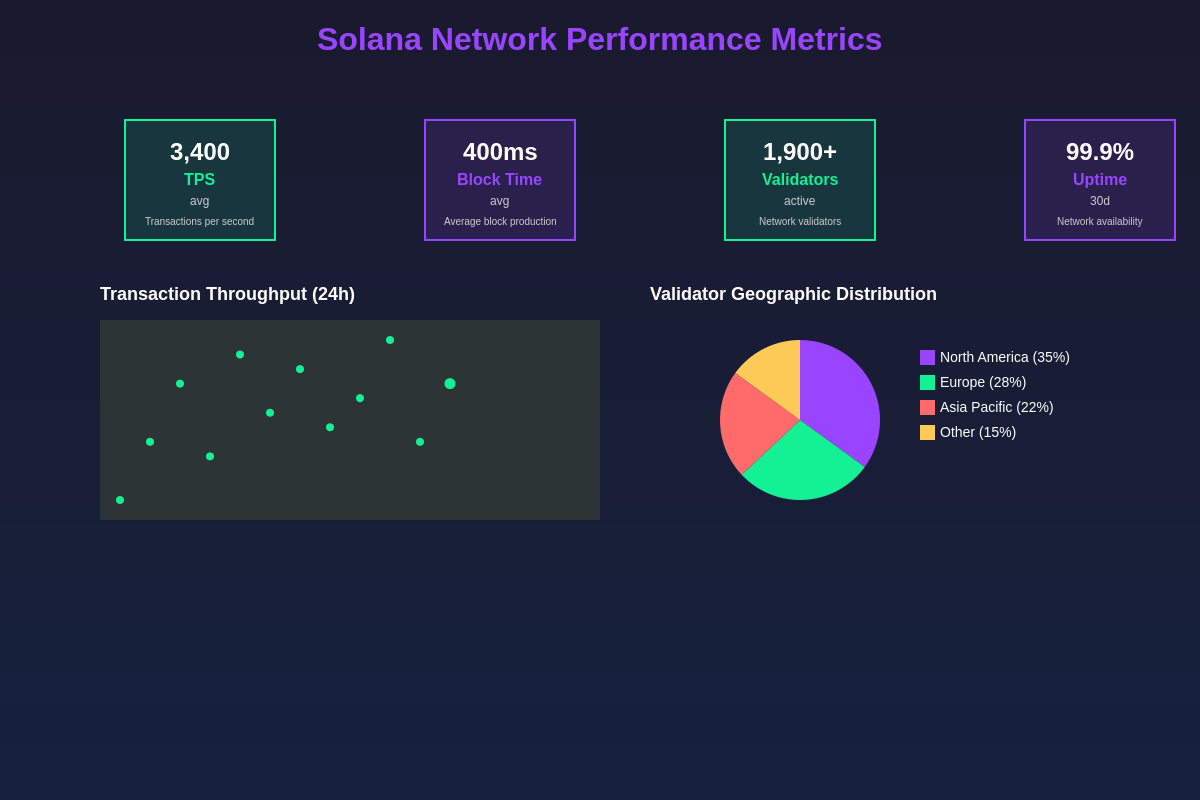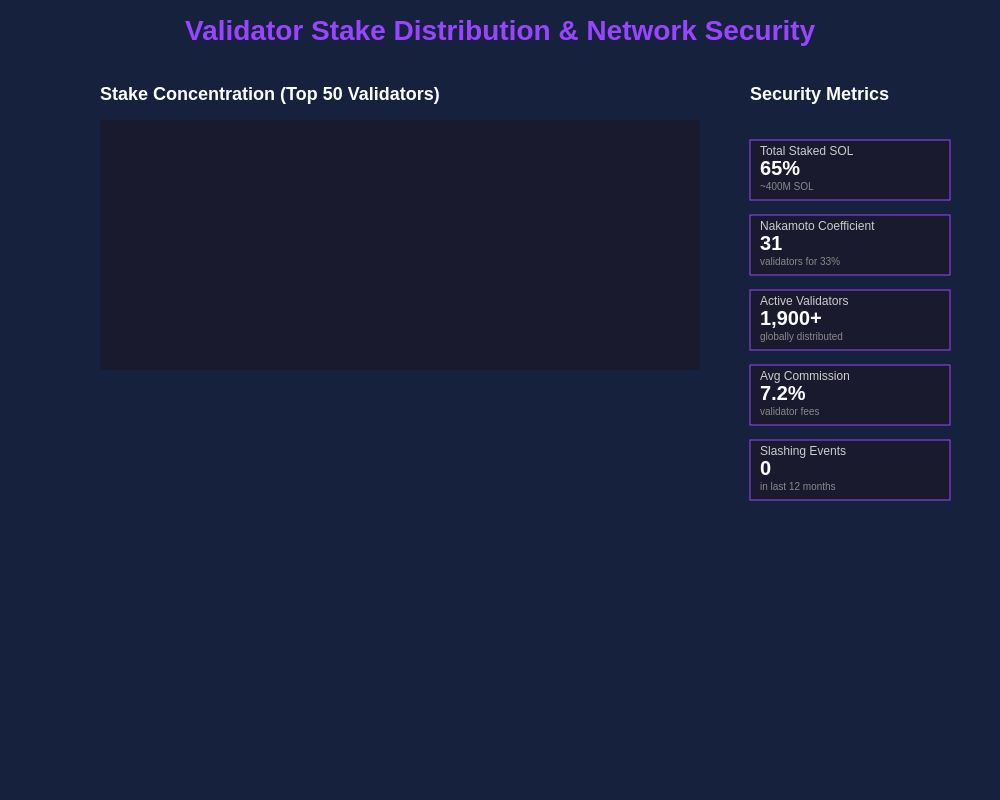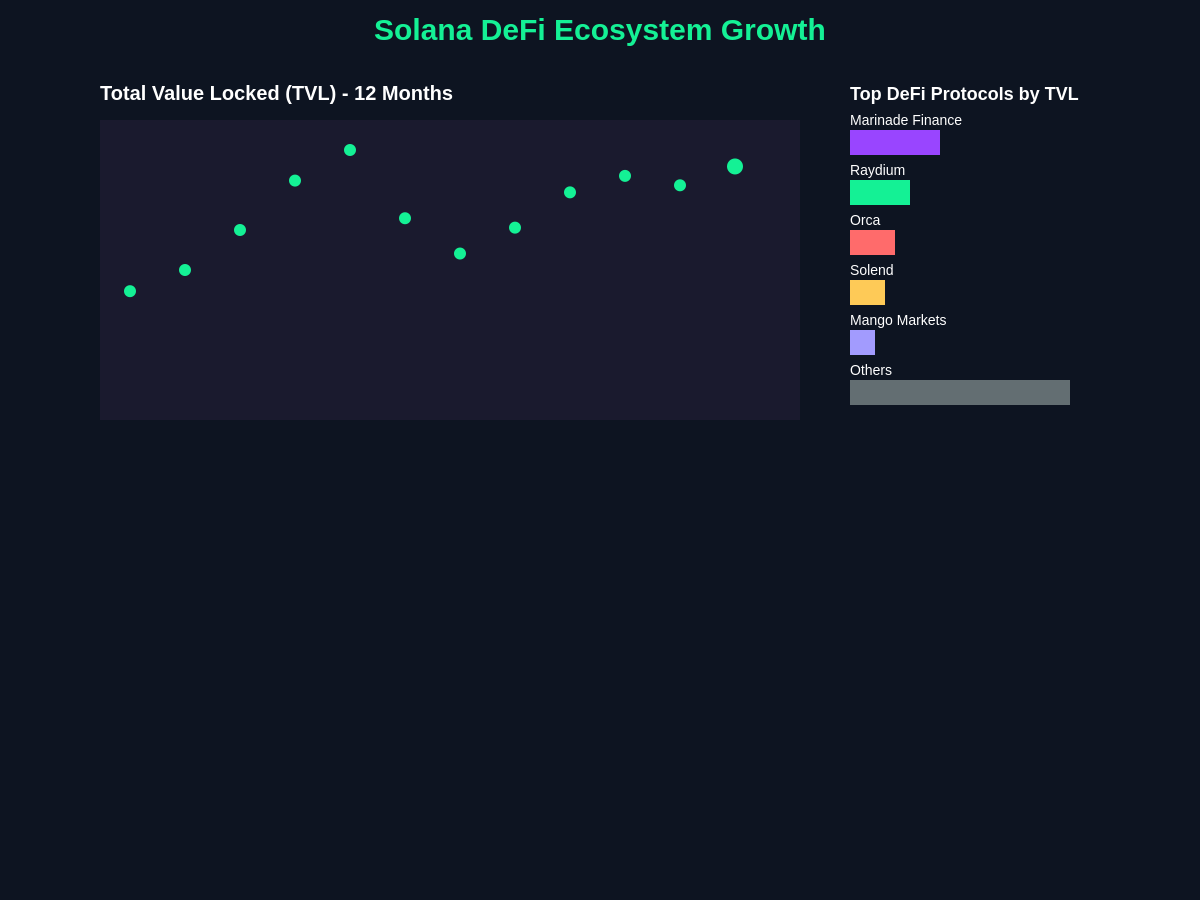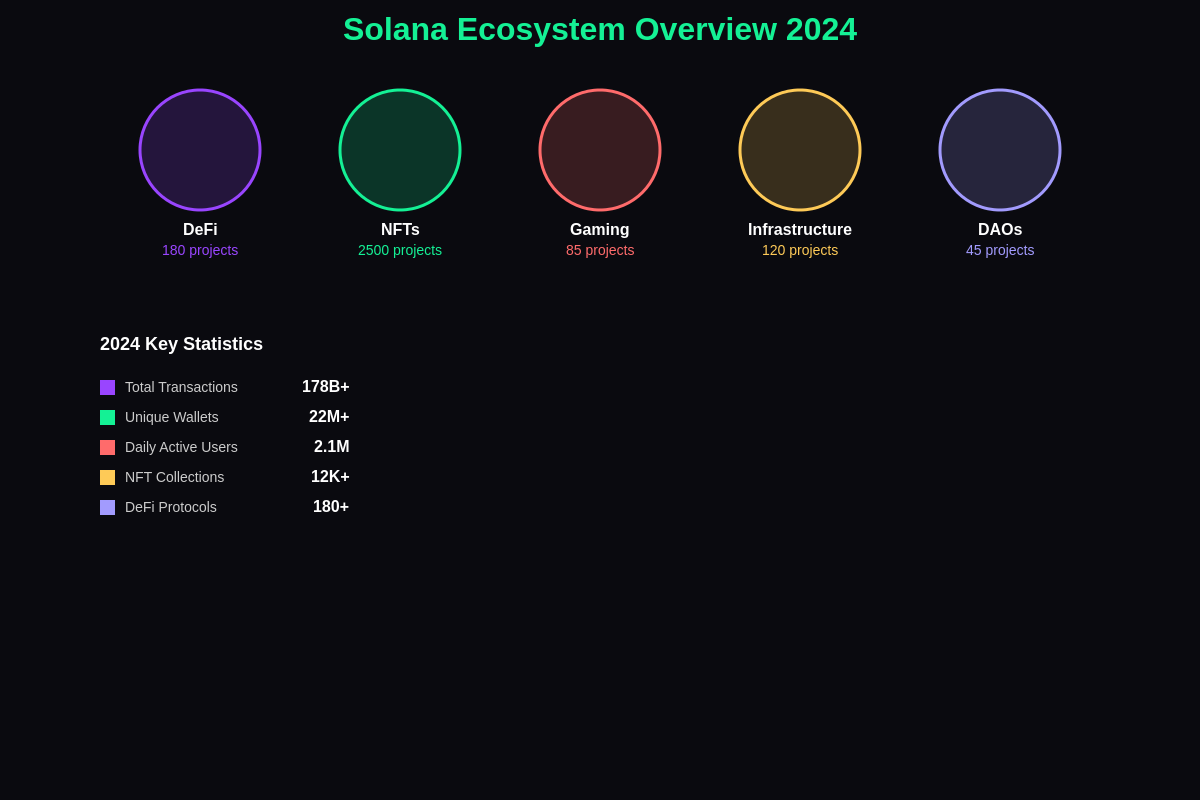Explore Solana’s performance data and analytics on TradingView to gain deeper insights into this high-performance blockchain’s market dynamics and technical indicators.
Understanding Solana’s Network Architecture and Performance Metrics
Solana has emerged as one of the most technologically advanced blockchain networks, distinguished by its unique consensus mechanism that combines Proof of History with Proof of Stake to achieve unprecedented transaction throughput and low latency. The network’s ability to process over 65,000 transactions per second while maintaining sub-second finality has positioned it as a formidable competitor to traditional payment systems and established blockchain networks alike.

The fundamental architecture of Solana revolves around eight core innovations that work synergistically to deliver exceptional performance, including Tower BFT consensus, Turbine block propagation, Gulf Stream mempool-less transaction forwarding, Sealevel parallel smart contract runtime, Pipelining transaction processing, Cloudbreak horizontally-scaled accounts database, and Archivers distributed ledger storage. Each of these components contributes to the network’s overall efficiency and scalability, creating a comprehensive ecosystem that can support high-frequency trading, gaming applications, NFT marketplaces, and decentralized finance protocols without the congestion issues that plague other blockchain networks.
Network health metrics for Solana encompass a wide range of indicators that provide insights into the blockchain’s operational status, security posture, and growth trajectory. Key performance indicators include transaction throughput measured in transactions per second, block time consistency, network uptime and stability, validator participation rates, stake distribution across validators, geographic decentralization of nodes, and the overall economic security provided by the total value staked on the network.
Transaction Volume and Throughput Analysis
The analysis of Solana’s transaction volume reveals patterns that reflect both organic growth and the network’s capacity to handle diverse application demands simultaneously. Unlike many blockchain networks that experience congestion during peak usage periods, Solana’s architecture allows for consistent performance even during high-demand events such as NFT mints, token launches, or trading volume spikes that would typically cause network slowdowns on other platforms.
Recent data indicates that Solana consistently processes between 2,000 and 4,000 transactions per second under normal conditions, with the capability to scale significantly higher during peak demand periods. This sustained throughput represents a dramatic improvement over first-generation blockchain networks and demonstrates the practical viability of high-performance blockchain infrastructure for mainstream applications that require real-time responsiveness.
The composition of transaction types on Solana provides valuable insights into network usage patterns, with decentralized exchange activity, NFT trading, gaming interactions, and DeFi protocol operations representing the largest categories of network activity. The diversity of transaction types indicates a healthy ecosystem with multiple use cases driving adoption rather than reliance on a single application category, which suggests sustainable long-term growth potential.
Transaction fees on Solana remain remarkably low compared to other major blockchain networks, typically ranging from $0.00025 to $0.001 per transaction, making the network accessible for high-frequency applications and micro-transactions that would be economically unfeasible on higher-fee networks. This fee structure has enabled innovative applications such as real-time gaming, social media interactions, and micropayment systems that require frequent transactions without prohibitive costs.
Validator Network Health and Decentralization Metrics
The health and decentralization of Solana’s validator network represents a critical component of the blockchain’s long-term security and resilience, with over 1,900 active validators distributed across multiple geographic regions and data centers worldwide. This extensive validator set provides redundancy and censorship resistance while ensuring that no single entity or geographic region can control or disrupt network operations.

Stake distribution analysis reveals that while some validators control larger portions of the total staked SOL, the network maintains sufficient decentralization to prevent any single validator or small group of validators from compromising network integrity. The Nakamoto coefficient, which measures the minimum number of validators needed to control more than 33% of the network stake, indicates healthy decentralization levels that continue to improve as the network matures and attracts more diverse participants.
Validator performance metrics include block production efficiency, vote accuracy, skip rates, and overall network participation, with high-performing validators being rewarded through increased delegation and higher staking rewards. The competitive nature of validation on Solana encourages continuous improvement in validator infrastructure and operations, contributing to overall network reliability and performance optimization.
Geographic distribution of validators shows healthy diversity across North America, Europe, Asia, and other regions, reducing the risk of network disruption due to regional internet outages, regulatory actions, or natural disasters. This global distribution also contributes to network latency optimization by ensuring that validators are positioned to efficiently propagate blocks and votes across different time zones and network routes.
DeFi Ecosystem Growth and Total Value Locked Analysis
The decentralized finance ecosystem on Solana has experienced remarkable growth, with Total Value Locked reaching peaks of over $10 billion during favorable market conditions and maintaining substantial value even during broader cryptocurrency market downturns. This TVL represents deposits across various DeFi protocols including automated market makers, lending platforms, yield farming protocols, synthetic asset platforms, and liquid staking services.

Major DeFi protocols on Solana include Raydium, Orca, Serum, Mango Markets, Solend, Marinade Finance, and Phantom, each contributing to the network’s liquidity infrastructure and providing users with sophisticated financial tools previously available only in traditional finance. The diversity of DeFi applications demonstrates Solana’s capability to support complex financial operations while maintaining the speed and cost advantages that make these services accessible to retail users.
Monitor Solana DeFi metrics and lending rates to track the performance of decentralized finance protocols and understand market dynamics across the ecosystem.
Yield farming opportunities on Solana have attracted significant capital from both retail and institutional participants, with liquidity mining programs, automated yield optimization strategies, and innovative tokenomics models driving user engagement and protocol growth. The high throughput and low fees of Solana enable more frequent rebalancing and compounding strategies that would be prohibitively expensive on other networks.
Cross-chain bridge activity represents another important metric for understanding Solana’s ecosystem growth, with substantial value flowing between Solana and other major blockchain networks through bridges like Wormhole, Allbridge, and Portal. This interoperability infrastructure enables users to access Solana’s advantages while maintaining exposure to assets and protocols on other networks.
NFT Market Performance and Cultural Impact
The Non-Fungible Token ecosystem on Solana has become one of the most vibrant and innovative in the cryptocurrency space, with collections like Degenerate Ape Academy, Solana Monkey Business, and various generative art projects achieving significant cultural impact and trading volumes. The low transaction costs on Solana have enabled new NFT use cases including gaming assets, membership tokens, and utility-focused NFTs that require frequent interactions.
NFT marketplace activity on platforms such as Magic Eden, Solanart, and DigitalEyes provides insights into user engagement, collector behavior, and the overall health of the digital collectibles market on Solana. Trading volume, unique buyers and sellers, average sale prices, and collection floor prices serve as key indicators of market sentiment and ecosystem vitality.
The integration of NFTs with gaming applications has been particularly successful on Solana, with projects like Star Atlas, Aurory, and various play-to-earn games utilizing the network’s performance characteristics to create seamless gaming experiences that incorporate blockchain-based assets. This gaming-NFT synergy represents a significant use case that differentiates Solana from other blockchain networks.
Creator royalty mechanisms and secondary market dynamics on Solana have evolved to balance creator compensation with market liquidity, leading to innovative approaches such as programmable royalties, creator DAOs, and community-driven curation systems that enhance the value proposition for both creators and collectors.
Network Upgrades and Technical Development Progress
Solana’s development roadmap includes continuous improvements to network performance, security, and functionality through regular upgrades and feature implementations. Recent upgrades have focused on improving network stability, enhancing validator client software, optimizing block propagation mechanisms, and introducing new features such as versioned transactions and address lookup tables.
The development team’s commitment to transparency and community involvement is reflected in detailed upgrade proposals, testnet implementations, and extensive documentation that allows developers and validators to prepare for upcoming changes. This collaborative approach to network development has contributed to smoother upgrade processes and higher community confidence in the network’s technical direction.
Performance optimization efforts have resulted in measurable improvements in transaction confirmation times, block production consistency, and overall network efficiency. These improvements are particularly important for applications that require predictable performance characteristics and low-latency interactions with the blockchain.
Security enhancements have addressed various aspects of network operation including consensus mechanism refinements, validator client hardening, and improved monitoring and alerting systems that help detect and respond to potential issues before they impact network performance. The focus on security reflects the network’s maturation and the increasing value secured by the blockchain.
Economic Tokenomics and Staking Dynamics
The SOL token serves multiple functions within the Solana ecosystem, including paying transaction fees, securing the network through staking, and participating in governance decisions. The tokenomics model includes inflationary rewards for validators and delegators, with a decreasing inflation schedule designed to balance network security incentives with long-term token value preservation.
Staking participation rates on Solana consistently exceed 70% of the total token supply, indicating strong community confidence in the network’s long-term prospects and the attractiveness of staking rewards. This high staking ratio also contributes to network security by ensuring that a significant portion of the token supply is locked and committed to honest network operation.
Track SOL staking yields and validator performance to optimize your staking strategy and understand the economic incentives driving network security.
Liquid staking solutions such as Marinade Finance and Lido have gained significant adoption by allowing users to stake their SOL while maintaining liquidity through derivative tokens. These protocols have democratized access to staking rewards while providing additional utility for staked tokens in DeFi applications.
The economics of validation on Solana involve considerations of hardware costs, bandwidth requirements, stake amounts, and commission rates, with successful validators balancing these factors to provide competitive returns to delegators while maintaining profitable operations. The validator economy has matured to include professional staking services, community-run validators, and institutional participants.
Developer Activity and Ecosystem Innovation
Developer activity metrics provide insights into the long-term growth potential of the Solana ecosystem, with indicators including active developer counts, repository activity, new project launches, and funding for Solana-based startups. The network has attracted significant developer interest due to its performance characteristics and growing ecosystem of tools and infrastructure.
The Rust programming language used for Solana development has proven attractive to developers from traditional software development backgrounds, enabling the network to tap into a larger talent pool beyond blockchain-native developers. This has contributed to higher code quality and more sophisticated applications compared to networks that rely exclusively on cryptocurrency-specific development communities.
Educational initiatives, hackathons, and developer funding programs have accelerated ecosystem growth by providing resources and incentives for developers to build on Solana. These programs have resulted in numerous successful projects and have helped establish Solana as a preferred platform for innovative blockchain applications.
Infrastructure development has focused on improving developer experience through better tooling, enhanced documentation, more reliable RPC endpoints, and comprehensive SDK support across multiple programming languages. These improvements have reduced barriers to entry for new developers and enabled more rapid iteration and deployment of applications.
Market Performance and Trading Analysis
Solana’s market performance reflects both its technological achievements and broader cryptocurrency market dynamics, with SOL token price movements often correlating with network usage metrics, development milestones, and ecosystem growth indicators. The token has demonstrated significant volatility characteristic of growth-stage cryptocurrency assets while showing resilience during market downturns.
Trading volume analysis across various exchanges and time periods reveals patterns related to institutional adoption, retail interest, and major network events. Higher trading volumes during network upgrades, major partnership announcements, and DeFi protocol launches indicate market sensitivity to fundamental developments rather than purely speculative trading.
Analyze SOL price action and trading volumes using advanced charting tools and technical indicators to identify trends and potential entry points for trading or investment strategies.
Correlation analysis with other major cryptocurrencies shows that while Solana often follows broader market trends, it has demonstrated periods of outperformance during times when its technological advantages or ecosystem developments differentiate it from other blockchain networks. This suggests that fundamental factors play an important role in SOL’s price performance alongside general market sentiment.
Institutional adoption indicators include exchange listings, custody service availability, regulatory clarity, and institutional investment product availability, all of which contribute to Solana’s accessibility for professional investors and traditional financial institutions seeking cryptocurrency exposure.
Challenges and Network Resilience
Despite its impressive performance characteristics, Solana has faced various challenges that provide important insights into network resilience and the development team’s ability to address issues effectively. Network outages, while infrequent, have highlighted areas for improvement and led to significant infrastructure enhancements that have improved overall network stability.
The response to network challenges has demonstrated the commitment of the development team and validator community to maintaining network operation and implementing solutions quickly. Post-incident analysis and improvement implementation have resulted in more robust network architecture and better monitoring systems.
Scalability challenges related to state growth, storage requirements, and bandwidth consumption represent ongoing areas of research and development, with solutions including state compression, improved data structures, and more efficient consensus mechanisms being actively developed and tested.
Competition from other high-performance blockchain networks requires continuous innovation and improvement to maintain Solana’s technological advantages and market position. This competitive pressure has accelerated development timelines and encouraged adoption of cutting-edge technologies and approaches.
Future Outlook and Growth Projections
The future outlook for Solana encompasses continued technological development, ecosystem expansion, and broader adoption across various industries and use cases. Planned improvements include mobile integration, enhanced privacy features, improved interoperability, and more sophisticated developer tools that will enable new categories of applications.

Enterprise adoption represents a significant growth opportunity, with Solana’s performance characteristics making it suitable for applications requiring high throughput and low latency such as payment processing, supply chain management, and real-time data verification. Early enterprise pilots and partnerships indicate growing interest from traditional businesses.
Regulatory developments will play an important role in Solana’s future growth trajectory, with increasing regulatory clarity potentially enabling broader institutional adoption and integration with traditional financial systems. The network’s technical capabilities position it well for compliant applications that require performance guarantees.
The expansion of Solana’s ecosystem beyond DeFi and NFTs into areas such as social media, gaming, IoT applications, and enterprise solutions represents substantial growth potential that could drive network usage and token value over the long term. These new use cases will test the network’s capabilities in different ways and contribute to its overall maturation and stability.
Disclaimer: This article is for informational purposes only and does not constitute financial advice. Cryptocurrency investments carry significant risks, including the potential for total loss of capital. Past performance does not guarantee future results. Always conduct your own research and consider consulting with a qualified financial advisor before making investment decisions. The volatile nature of cryptocurrency markets means prices can fluctuate dramatically, and regulatory changes may impact the value and legality of digital assets in your jurisdiction.